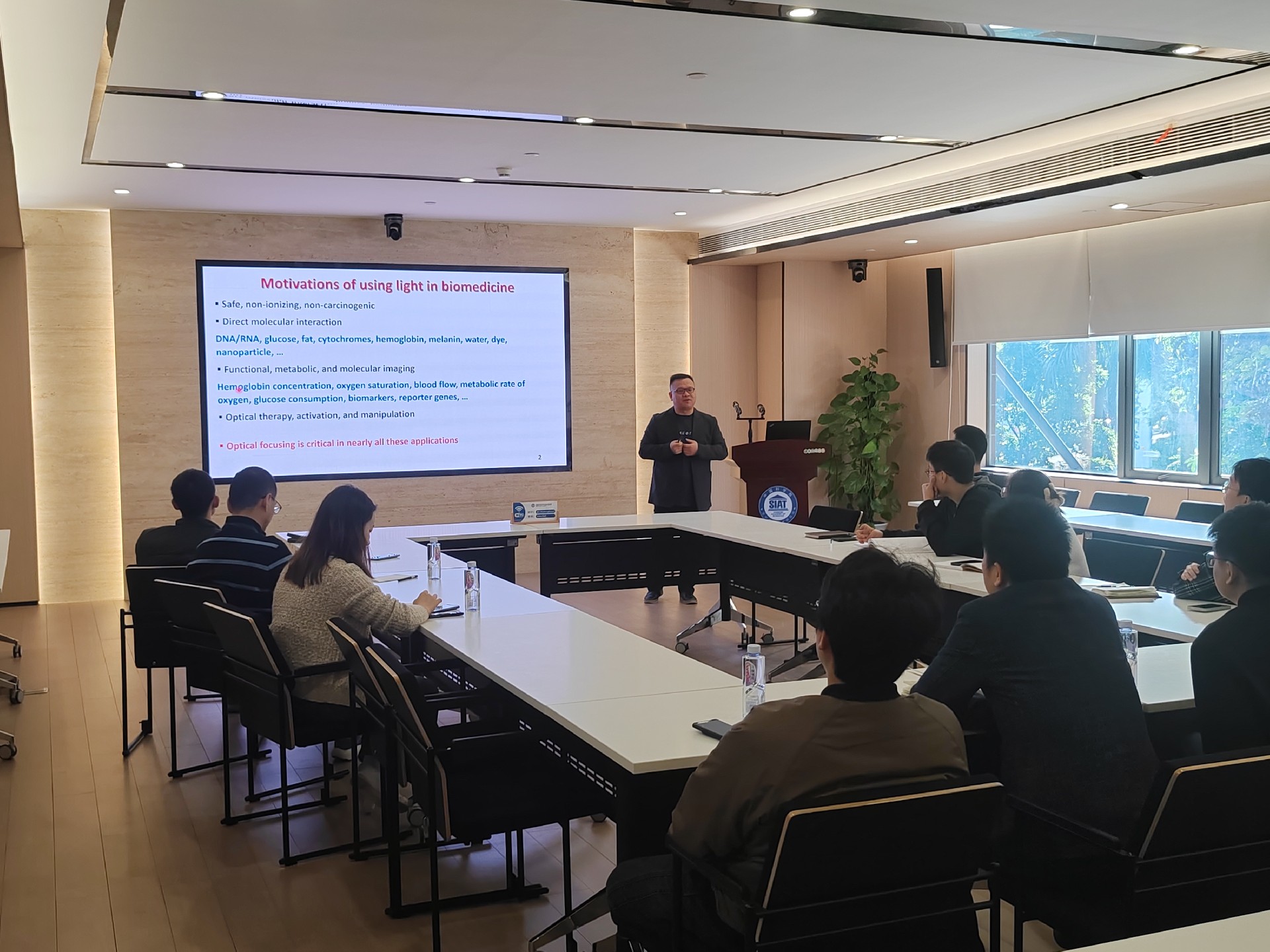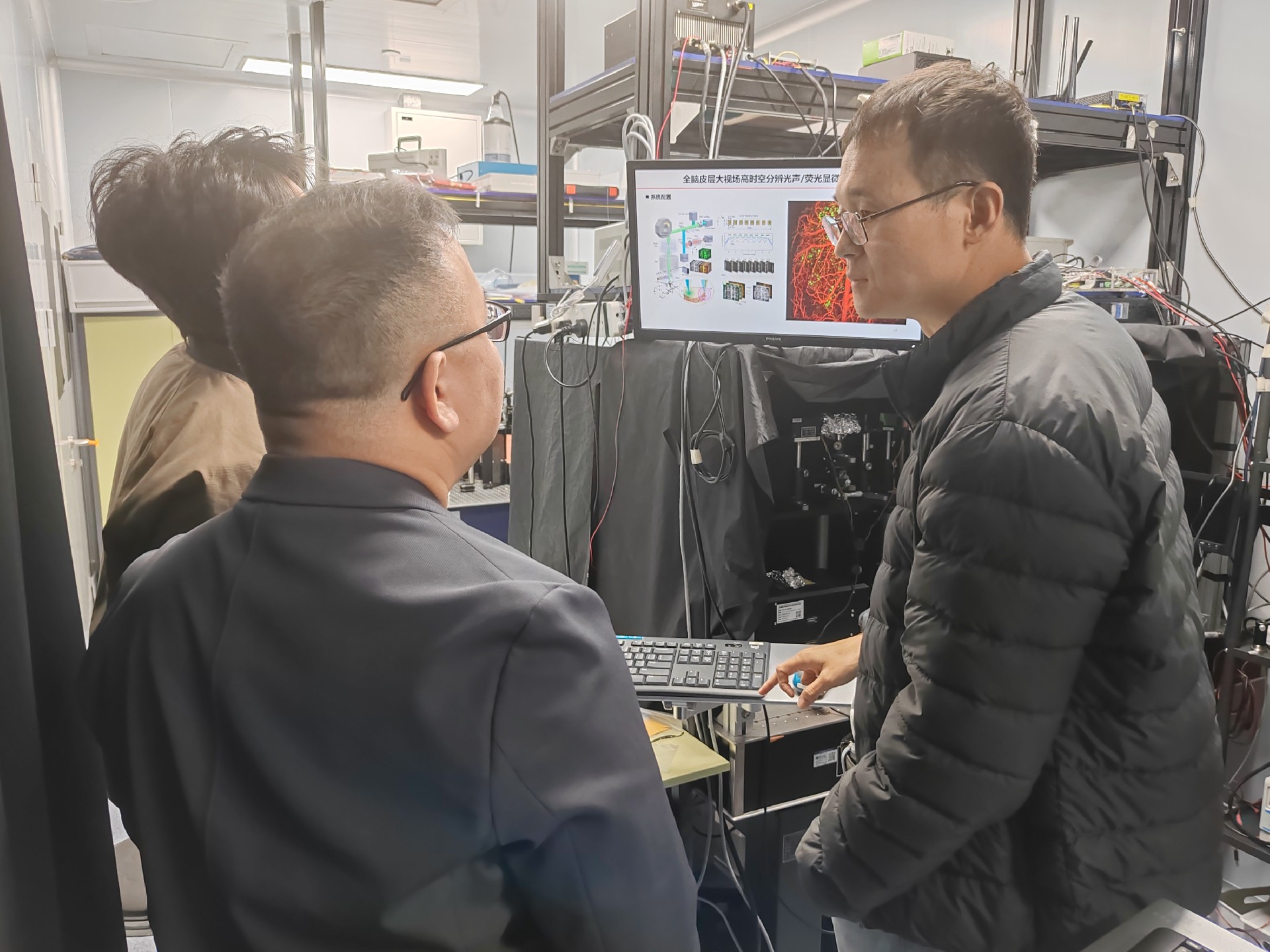On January 8, 2025, Professor Puxiang Lai from The Hong Kong Polytechnic University visited the Shenzhen Institute of Advanced Technology, Chinese Academy of Sciences, to deliver an academic lecture titled "More information from deep tissue with light: Continuing efforts based on photoacoustics and wavefront shaping."
Optical technologies play an increasingly vital role in modern biomedicine. However, due to the inherent spatial inhomogeneity of the refractive index in biological tissues, light propagation experiences significant scattering, leading to a trade-off between penetration depth and spatial resolution in purely optical techniques. Achieving focused light through scattering media for practical applications remains a challenging yet highly anticipated goal.
In his lecture, Professor Lai discussed methods to focus scattered light and summarized over a decade of efforts combining photoacoustic imaging, optical wavefront shaping, and artificial intelligence. These endeavors aim to control scattered light and achieve high-resolution optical imaging and focusing in deep biological tissues. He also explored potential applications in areas such as information transmission, logical operations, encryption and decryption, optical neural stimulation, and microscopic endoscopy.

Professor Lai engaged in discussions with faculty and students at the Shenzhen Institute of Advanced Technology, Chinese Academy of Sciences

Professor Lai and Researcher Chengbo Liu engaged in discussions within the laboratory
Personal Profile:
Professor Puxiang Lai has been serving in the Department of Biomedical Engineering at The Hong Kong Polytechnic University since 2015, where he supervises doctoral students and leads a research laboratory. He has long been dedicated to the study of scattered light control and deep tissue optics. Over the past decade, he has conducted extensive original and forward-looking work in areas such as photoacoustic imaging, scattered light focusing, optical imaging, computational optics, and artificial intelligence. His research has garnered international attention and recognition. As the first or corresponding author, he has published over 100 papers in internationally renowned academic journals, including Nature Photonics, Nature Communications, The Innovation, eLight, Light: Science & Applications, and Advanced Materials. He has also been invited to deliver over 100 academic lectures and presentations.
Since 2017, Professor Lai has led more than 20 projects funded by organizations such as the National Natural Science Foundation of China (including General Programs, Major Scientific Instrument Development Projects, and Key Programs), the University Grants Committee of the Hong Kong Special Administrative Region, the Innovation and Technology Commission of Hong Kong, the Department of Science and Technology of Guangdong Province, and the Shenzhen Science and Technology Innovation Commission. He was awarded the Hong Kong Outstanding Young Scholar Award for 2016-2017 and received the Faculty of Engineering's Outstanding Research Fund Award at The Hong Kong Polytechnic University in 2018, 2021, and 2023. He was also a Wang Kuancheng "Belt and Road" Visiting Scholar in 2019 and received the Faculty of Engineering's Excellence in Research Award at The Hong Kong Polytechnic University in 2020 and 2023.
Currently, Professor Lai serves as a council member of the World Association for Chinese Biomedical Engineers and as the president of the Hong Kong branch of the Chinese Laser Press. He is also a standing committee member of the Biomedical Photonics Committee of the Chinese Optical Society and a member of the Biomedical Photonics Committee of the Chinese Society of Biomedical Engineering. Additionally, he holds positions as associate editor or editorial board member for several esteemed academic journals, including The Innovation, Visual Computing for Industry, Biomedicine, and Art (VCIBA), Advanced Photonics Nexus, Advanced Imaging, PhotoniX Life, The Innovation Medicine, Journal of Innovative Optics in Health and Science (JIOHS), and Medicine in Novel Technology and Devices (MEDNTD).